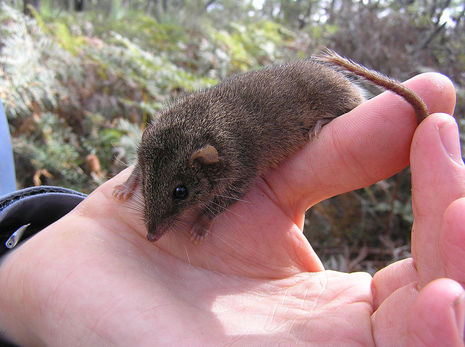Research Roundup: Week One
Sam Hudson keeps you up-to-date with the latest scientific discoveries from the first week of term
Live fast, die young – this Aussie marsupial commits mass suicide after sacrificing sleep for sex

Though it may sound like the ideal night out to some, you would not want to be a male Antechinus. Research published last week showed that male Antechinus, a small genus of marsupial, similar in appearance to a mouse, swap sleep for sex during the mating season ultimately ending in the “synchronous deaths of all males at the end of their only mating season”. It is not known what exactly leads to this mass death, but it is thought to be a combination of environmental triggers and the suppression of the immune system caused by the high levels of corticosteroids released by testosterone during the mating season.
“Getting only one shot at mating, they have to shoot it”
Researchers also compared oxalic acid levels – an indicator of sleep deprivation – in male and female Antechinus before and after the mating season. Measured levels declined in both across the mating season but were much lower in males due to their … hyperactivity. It is thought the Antechinus’s extreme horniness is due to evolutionary pressures resulting from their short lifespan. Getting only one shot at mating, they have to shoot it. In contrast to the unfortunate males, female Antechinus usually survive the raunchy romp and live for at least a year longer. While a few lucky males make it through the mating season alive, they are rendered sterile by processes not yet understood. At least they had fun while it lasted …
Belly-flop? Japanese moon probe lands but problems persist
After facing a mission-threatening hitch, a Japanese lunar lander has been able to resume its mission. The “Slim” probe had smashed the record for lunar precision, landing within 100m of its target area (20/01). But after its solar cells failed to generate any electricity, many feared the mission would end prematurely. Pictures taken from a small robotic rover carried by the lander showed that the probe had landed belly-first, making it impossible to orient its solar panels correctly.
“Despite this hiccup, JAXA have still considered the mission a success”
Though Slim’s battery was hibernated, there was hope that the moon’s orbit may carry the probe’s solar cells back into the sunlight. This has now indeed happened and Slim has been able to continue its mission analysing olivine rocks on the lunar surface. Olivine rocks are believed to have been formed early in the development of planets and so can help scientists better understand how the moon was formed.
Red Redemption – Scientists turn red sludge into green iron
The “red mud” produced as a byproduct of processing bauxite ore, a crucial step in the manufacture of aluminium, is one of the world’s most common – and environmentally hazardous – waste products. Four billion tonnes of the iron oxide-rich sludge is produced every year. While the substance can be stored safely, its sheer quantity and high alkalinity can cause a catastrophe if released into the environment. Scientists have now put this toxic waste to use, converting iron oxide in the mud into carbon-neutral iron. By exposing processed red mud to a plasma of hydrogen in a furnace, the iron oxide was reduced, releasing iron and water. Using this process, researchers obtained a yield of 70% of the iron in the mud. While the sustainability of this process is obvious, there are other advantages too. As this process avoids using a blast furnace – which can introduce carbon and other impurities – the iron is particularly pure and is suitable for steel production without further refining.
 News / Proposed changes to Cambridge exam resits remain stricter than most7 May 2024
News / Proposed changes to Cambridge exam resits remain stricter than most7 May 2024 News / Cambridge students set up encampment calling for Israel divestment6 May 2024
News / Cambridge students set up encampment calling for Israel divestment6 May 2024 Features / Cambridge punters: historians, entertainers or artistes? 7 May 2024
Features / Cambridge punters: historians, entertainers or artistes? 7 May 2024 Sport / The ‘netball girl’: myth or reality?7 May 2024
Sport / The ‘netball girl’: myth or reality?7 May 2024 Theatre / A nuanced and neurodivergent Carrie comes to the ADC6 May 2024
Theatre / A nuanced and neurodivergent Carrie comes to the ADC6 May 2024







